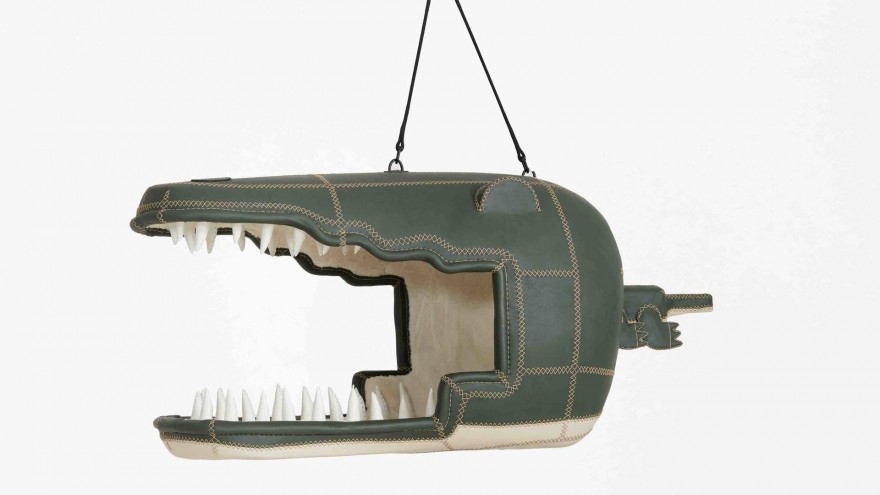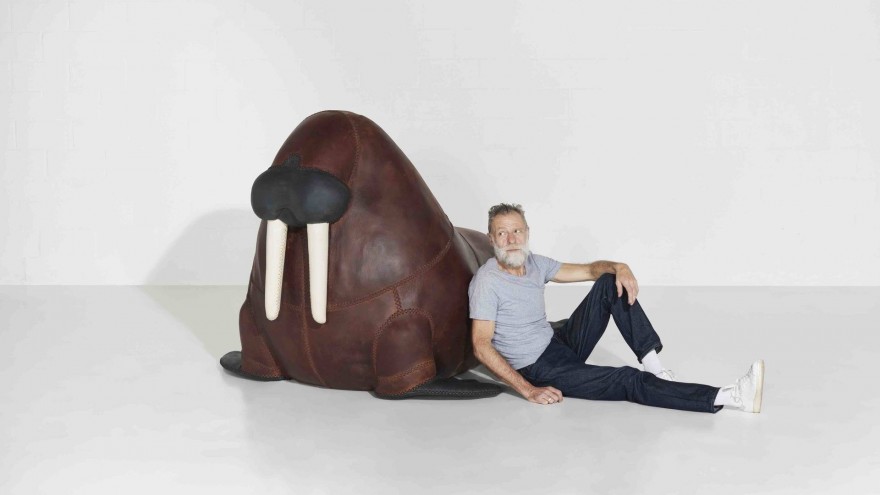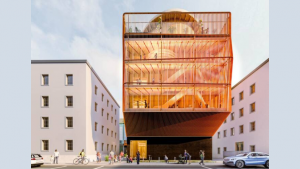No bats, no chocolate, a solo exhibition of handcrafted seating environments by South African artist and Design Indaba alum Porky Hefer, presented by Southern Guild, is at Galerie56 in New York until 26 August 2024.
Designed to awaken a sense of play and wonder, Hefer’s new collection is a ‘toy box’ of inhabitable, animal-inspired sculptures that celebrate the intelligence and ingenuity of wild creatures. Each of the nine larger-than-life forms appeals directly to our imaginations, inviting a physical and emotional connection that places humans in communion with – rather than dominion over – the animal kingdom.
‘While beavers are often seen as a menace,’ Hefer notes, ‘they create vital ecosystems when they make dams, giving little fish a chance to grow, and attracting frogs and other species. Their teeth contain high amounts of iron, which turns them orange and enables them to withstand the mechanical stress of gnawing through wood – including trees more than three metres tall. Their incisors never stop growing, so they do not become too worn despite years of chewing through hardwoods.
‘Bats also have endearing characteristics,’ continues Hefer. ‘They all have belly buttons and in two species of Old World bats, the males can produce milk to feed their young. The flying mammals are responsible for pollinating many plants we use for medicinal, cultural and economic purposes, including bananas, avocados, mangoes, agave and cacao – so you can give a little thanks when indulging in chocolate sweetness.’
While the exhibition presents a humorous façade, no bats, no chocolate is also a serious plea from Hefer for greater tolerance of and reverence towards wild species whose numbers are being outpaced by the proliferation of domesticated animals. ‘So many kids growing up in big cities don’t have positive relationships with wild animals. Their default response is one of fear and hostility,’ says Hefer. ‘But you have to love animals to protect them, and the less contact children have with animals, the less desire they will have to safeguard them.’
Hefer’s message of constructive coexistence with nature is borne out in his design methodology too. Referring to the collection as ‘a new kind of animal architecture’, he approaches it as a series of prompts inviting various ways to interact with the works like crawling inside a wildebeest, lying on the walrus chaise or perching atop the beaver. The exchange between the user’s body and Hefer’s work is at the crux of his project, rooted in the disruptive power of play as a means to ignite a more creative, connected and humane way of relating to our environment and each other.
READ MORE








